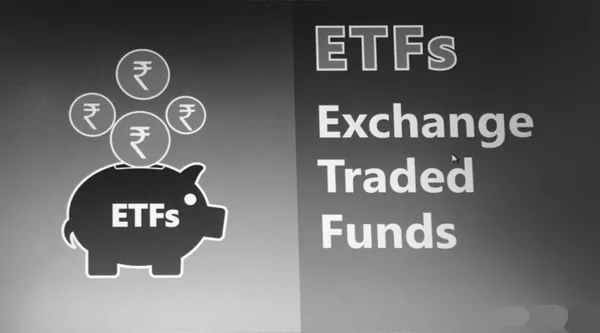ETFs, or Exchange-Traded Funds, have gained immense popularity in recent years as a convenient investment vehicle. However, for many investors, understanding how ETFs are priced remains a mystery. In this article, we will dive into the fascinating world of ETF pricing, unraveling the mechanics that underpin their value. By the end, you will have a clearer grasp of the factors that influence ETF pricing and how it differs from traditional mutual funds. So, let’s embark on this journey of discovery to demystify the enigmatic process of ETF pricing.
I. Understanding the Basics
Creation and Redemption Process
ETFs are unique investment funds that are created and redeemed by authorized participants (APs), typically large institutional investors. APs are responsible for maintaining the supply and demand of ETF shares. They create new shares when demand is high and redeem them when demand is low. This process helps keep the ETF’s market price aligned with its net asset value (NAV).
Net Asset Value (NAV)
The NAV is a crucial metric that represents the total value of an ETF’s underlying assets. It is calculated by dividing the total value of the fund’s assets minus liabilities by the number of outstanding shares. NAV is typically computed at the end of each trading day.
II. Primary Market Operations
Creation Unit
APs create and redeem ETF shares in large blocks known as creation units. These creation units typically consist of tens of thousands of shares. The creation unit size may vary depending on the ETF provider and the type of fund.
In-Kind Transactions
The creation and redemption process involves in-kind transactions, where APs exchange a basket of securities for ETF shares (creation) or vice versa (redemption). This mechanism allows for efficient and tax-advantaged portfolio management.
Arbitrage Opportunities
The creation and redemption process enables APs to exploit arbitrage opportunities. If an ETF’s market price deviates from its NAV, APs can create or redeem shares to profit from the price discrepancy, thereby helping to bring the market price back in line with the NAV.
III. Secondary Market Dynamics
Supply and Demand
Once ETF shares are created, they are made available for trading on the secondary market exchanges. Similar to stocks, the market price of an ETF is determined by the forces of supply and demand. If demand for an ETF surpasses its supply, the price may rise above the NAV, leading to a premium. Conversely, if supply exceeds demand, the price may fall below the NAV, resulting in a discount.
Market Makers
To ensure liquidity and smooth trading, market makers play a vital role in the secondary market. These financial institutions facilitate the buying and selling of ETF shares by providing competitive bid and ask prices. They help narrow the gap between the ETF’s market price and its NAV through arbitrage activities.
Intraday Pricing
Unlike mutual funds, which are priced only once at the end of the trading day, ETFs trade throughout the day like individual stocks. This continuous trading allows investors to buy or sell ETF shares at market prices that may deviate from the NAV. However, the presence of market makers and arbitrage keeps these deviations relatively small.
IV. Factors Influencing ETF Pricing
Underlying Asset Performance
The performance of an ETF’s underlying assets directly impacts its NAV, which, in turn, affects the ETF’s market price. If the securities within the fund appreciate, the ETF’s NAV increases, potentially leading to a rise in its market price.
Dividends and Distributions
ETFs may hold dividend-paying securities or receive income from other sources. These dividends and distributions are typically reinvested back into the ETF, increasing its NAV. Consequently, the market price of the ETF may also be affected, although the impact is often minor.
Expenses and Fees
ETFs charge management fees and other expenses that are deducted from the fund’s assets. These costs can have a slight downward pressure on the ETF’s NAV over time, which may translate into a slightly lower market price.
Market Conditions
Overall market conditions and investor sentiment can influence the demand for specific ETFs. During periods of optimism and bullish markets, investors may flock to ETFs, driving up demand and potentially leading to premium pricing. Conversely, during bearish markets or uncertain times, investors may sell ETFs, causing prices to dip below the NAV.
Tracking Efficiency
ETFs are designed to track a specific index or sector. The ability of an ETF to accurately track its underlying benchmark can affect its pricing. If the ETF closely mirrors the performance of its index, investors will have confidence in its value, and the market price is likely to align closely with the NAV.
V. Special Considerations
Liquidity and Trading Volume
ETFs with higher trading volumes generally have tighter bid-ask spreads, providing better liquidity. This liquidity helps ensure that ETF shares can be bought or sold at prices close to their NAV, reducing the impact of transaction costs.
Market Disruptions
Extraordinary events such as market shocks, regulatory changes, or extreme market volatility can disrupt the normal functioning of ETFs. In such cases, ETF prices may temporarily deviate significantly from their NAV due to the imbalance of supply and demand or pricing inefficiencies.
Conclusion
Understanding how ETFs are priced is essential for investors seeking to make informed decisions. ETF pricing is influenced by factors such as creation and redemption mechanisms, NAV calculations, supply and demand dynamics, market makers, and various market conditions. By comprehending these intricacies, investors can gauge the fair value of an ETF and assess potential opportunities or risks. Remember, while ETFs are traded like stocks, their underlying mechanics differ from traditional mutual funds. Embrace the transparency and versatility that ETFs offer as you navigate the world of investing.


